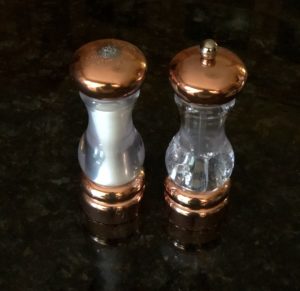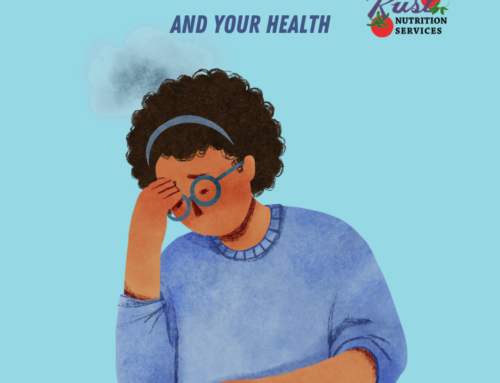As a dietitian who has studied heart diseases and diet for nearly 30 years, I thought it would be a good time to review some blood pressure basics (I’m also in the middle of editing a book on blood pressure and diet, so it’s top of mind). Given the recent attention to racial disparities, I’d like to bring to some facts to the attention of both patients and practitioners. It’s important to seek treatment for high blood pressure and to talk to a doctor about your blood pressure risk. Following a DASH style eating plan may be a preventive measure, and has been shown to reduce blood pressure in those with hypertension, so ask for a dietitian referral.

What is Hypertension?
Hypertension is the medical term for high blood pressure. Blood pressure is the measure of the force that blood pumps through the arteries in the body. Communicated with two numbers, blood pressure is spoken as “118 over 76” (that is, if you have normal blood pressure). Normal blood pressure is considered to be less than 120/80.
Blood pressures is considered elevated when it’s between 121/80 and 129/80 (this used to be called pre-hypertension, but in 2017 the American Heart Association changed the terms that doctors use to categorize and diagnose blood pressure. This was in hopes to better manage it at its earliest stages). At this “elevated” range, your doctor may ask you to check in more often, and may prescribe a treatment plan. This “elevated” stage is a good time to begin looking at modifying diet and exercise.
Hypertension is when blood pressure is higher than 130 over 80. It’s diagnosed when those numbers are consistently higher than 130/80. You’ll be diagnosed with “Stage 1” high blood pressure when the top number is between 130-139 and/or the bottom number is between 80-89.
If it’s 140/90 or higher, then this is considered “Stage 2” Hypertension (if blood pressure is extremely high, >180/120, it’s a crisis and you should go directly to the Emergency Room). Extremely high blood pressure is dangerous so it’s important to know whether you have high blood pressure or not because it can lead to kidney damage, stroke or heart attack.
Prevalence
More than 100 million US adults (that’s nearly half of all Americans) suffer from hypertension. Many people aren’t aware they even have high blood pressure. Blood pressure levels have consistently been higher for African Americans and they often experience an earlier onset of hypertension. This is important to address given the observation that high blood pressure is associated with higher risk with COVID19. African Americans also tend to develop high blood pressure earlier in life. Some studies show that African Americans are five times as likely to have dangerously high blood pressure, however, close to 20 percent of all individuals with high blood pressure are not aware they have a problem.
It’s unclear exactly why African Americans are at higher risk over whites but it seems to be a combination of genetic and environmental factors. It may be related to the prevalence of obesity, and some individuals may be more sensitive to salt. Some feel that access to health care and resources plays a role in less diagnosis and treatment. Research has suggested other genetic issues showing that African Americans somehow respond differently to blood pressure medicine.
Treatment
The first step to treatment is checking your blood pressure and getting a diagnosis. It’s important to keep blood pressure in the normal range, with medication and lifestyle. Often lifestyle isn’t enough, so it’s important to follow up with your doctor about any prescribed medication.
Diet and exercise will help reduce blood pressure also. Smoking and alcohol use both adversely impact blood pressure too (stop smoking and limit your intake of alcohol). The Dietary Approaches to Stop Hypertension eating plan (DASH) can help lower blood pressure by reducing sodium and increasing potassium in the diet.
Quick Changes You Can Make in Your Diet
- Commit to swapping out animal fats in cooking and replacing with vegetable oils.
- Add 1 to 2 servings of fruit to both breakfast and lunch meals. Try fresh, canned (without syrup) or frozen fruit added to oatmeal. Add a 1/2 cup of canned peaches to low-fat cottage cheese. Or, add a sliced banana to a bowl of whole grain cereal with low milk.
- Add more vegetables to your lunch and dinner meals. Add frozen vegetables to low salt homemade soups. Canned beans (drain and rinse) can easily be added to a salad or in a rice dish. Add a tossed salad to dinner each night.
- Use less salt. Cut the salt in cooking in half, and use little to no added salt at the table. I recommend spices, fresh or dried herbs, citrus (juice, zest), and salt-free seasoning blends to spice things up and boost flavor without salt.
- Add some dairy. Try enjoying a fruit smoothie made with low sodium cottage cheese or yogurt. Add a glass of milk to lunch or a snack. If you are lactose intolerant, try Lactaid® milk products. If you really can’t tolerate milk products, focus on more veggies and fruit in your diet, and less sodium.
- Eat less meat, choose lean cuts, and limit salty cured meats.
- Check in with your doctor regularly for a blood pressure check. You can also have your blood pressure checked at a local pharmacy, or buy an inexpensive blood pressure monitor to check it at home (this may not be as accurate as your doctor’s office, but it will help you check up on yourself).
Please sign up and download my free DASH Diet Quick Guide and check out our books to learn more about DASH Diet. Leave a comment if you’d like me to address additional concerns in a future post.
I get a small commission from anything purchased at my Amazon store. You’ll find salt-free seasoning blends (Healthy Pantry Section) and my recommended books and cookbooks there.




